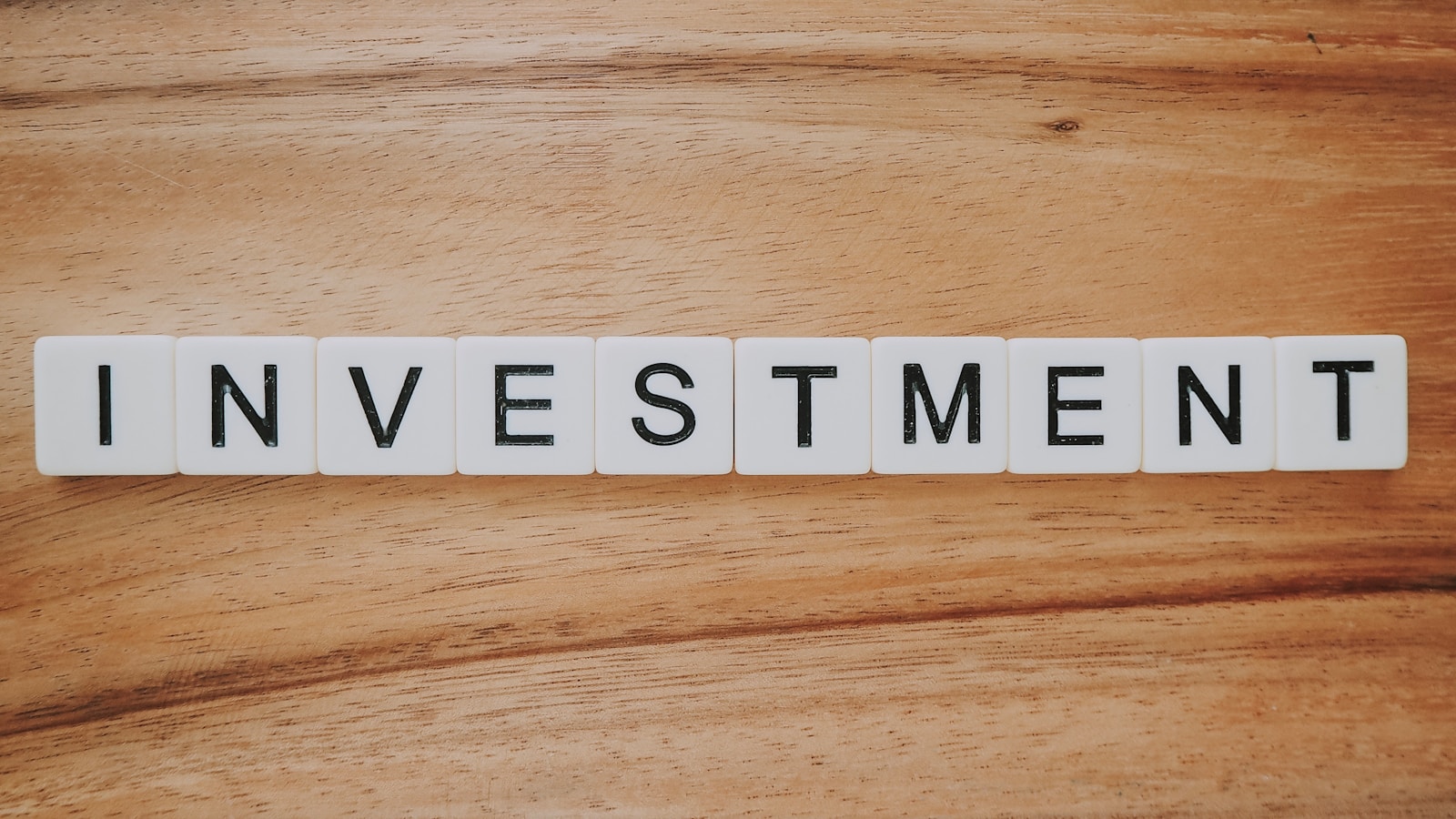Aligning your personal ease level with a fitting approach is key to maintaining confidence during financial fluctuations. Identifying your unique profile helps create a plan that matches how much uncertainty you can handle without stress.
Assessing your threshold for potential loss and gains allows you to tailor a method that balances growth opportunities with stability. This balance ensures decisions feel natural rather than forced, supporting long-term consistency.
Recognizing the degree of variability you accept guides the selection of assets and timing. Practical steps include reviewing past reactions to market changes and adjusting allocations to better fit your psychological and financial boundaries.
Risk tolerance: understanding investment comfort
To effectively align your portfolio with your personal financial objectives, it is critical to assess how much uncertainty and potential loss you can endure without distress. This alignment helps create a strategy that fits your unique psychological and financial profile, ensuring that market fluctuations do not lead to hasty or emotional decisions.
Matching an approach to your individual disposition involves analyzing both quantitative data–such as volatility metrics and drawdown thresholds–and qualitative aspects like behavioral responses to market downturns. For example, an investor with a conservative stance might prioritize assets with lower price variability, while someone with a more aggressive outlook may allocate toward high-growth cryptocurrencies prone to significant swings.
Profiling for strategic asset allocation
A comprehensive evaluation of one’s capacity for financial variability involves considering time horizon, liquidity needs, and previous experiences with market shifts. Technical frameworks such as Modern Portfolio Theory (MPT) utilize standard deviation and expected returns to quantify acceptable exposure levels. Incorporating these calculations into your decision-making process can yield a tailored blueprint that reflects your specific preferences and constraints.
Consider the case of two hypothetical profiles: Investor A prefers steady yields from established blockchain projects offering staking rewards, thus limiting exposure to speculative tokens; Investor B seeks rapid capital appreciation by engaging in initial coin offerings (ICOs) and decentralized finance (DeFi) ventures despite their heightened unpredictability. Each profile demands a distinct roadmap that respects the psychological ease of navigating inevitable fluctuations.
Practical application of these insights involves setting predefined parameters such as maximum drawdown limits or portfolio rebalancing triggers. Utilizing algorithmic tools can assist in maintaining adherence to these boundaries by automating adjustments based on real-time market data. This disciplined approach fosters confidence by preventing overexposure beyond one’s emotional or fiscal threshold.
Ultimately, developing a personalized framework requires continuous reflection and adaptation as circumstances evolve. Regularly revisiting your comfort level–through journaling reactions to market events or simulation exercises–can enhance self-awareness and inform necessary recalibrations. By doing so, you cultivate resilience against volatility while optimizing growth prospects aligned with your individual design.
Assessing Personal Risk Capacity
Determining your personal capacity to handle fluctuations in asset value is critical for constructing a portfolio that aligns with your unique financial situation and goals. The objective is to match your psychological resilience and financial ability with an allocation plan that maintains your peace of mind while pursuing growth.
To begin, quantify how much volatility you can endure without making impulsive decisions. For example, some investors remain steady during a 10% drop in portfolio value, whereas others may find even a 5% decline unsettling. Understanding this threshold informs the design of a strategy that avoids emotional reactions detrimental to long-term outcomes.
Creating a comprehensive profile involves analyzing factors such as income stability, liquidity needs, investment horizon, and past behavioral responses to market shifts. A software tool used by many asset managers applies questionnaires to evaluate these dimensions systematically, producing a numerical score indicating an individual’s capacity for uncertainty.
A practical case study involved two individuals with identical portfolios but differing profiles: one had secure employment and emergency savings, enabling higher exposure to volatile assets; the other relied on freelance income with limited reserves, necessitating a conservative approach focused on capital preservation. This comparison illustrates why identical strategies might not suit all investors.
Balancing growth ambitions with downside protection requires continuous review and possible adjustments as life circumstances evolve. For instance, approaching retirement typically reduces one’s ability to absorb losses comfortably, prompting shifts toward more stable instruments or diversified holdings across various blockchain-based assets like tokenized real estate or decentralized finance protocols.
Using simulation models that incorporate historical data from cryptocurrency markets helps anticipate potential portfolio behaviors under different scenarios. These technical analyses support informed decision-making by illustrating probable drawdowns and recovery periods aligned with individual profiles. Ultimately, aligning your plan with your psychological and financial parameters fosters consistency and confidence throughout the investment journey.
Impact of Age on Risk Levels
Age significantly influences the degree of risk an individual is willing to accept during asset allocation, shaping their financial profile. Younger individuals generally exhibit a higher propensity for volatility due to longer time horizons, enabling them to absorb potential losses and capitalize on market growth. For example, a 25-year-old cryptocurrency investor might allocate over 70% of their portfolio to emerging tokens with unpredictable returns, aligning with a more aggressive disposition.
Conversely, as people approach retirement, their preference shifts toward preserving capital and minimizing exposure to drastic fluctuations. A 60-year-old might favor stable digital assets or blockchain projects with established track records and consistent performance metrics. This shift reflects a desire for alignment between investment choices and life stage priorities, emphasizing steady income streams over speculative gains.
Technical Insights into Age-Driven Behavioral Patterns
Quantitative studies confirm that age correlates with decreasing appetite for uncertainty in financial decisions. According to data from behavioral finance research, investors under 35 often display elevated neurobiological responsiveness to potential rewards, which translates into greater enthusiasm for high-risk ventures like initial coin offerings (ICOs) or DeFi projects with complex protocols. Older demographics typically show heightened sensitivity to loss aversion mechanisms, preferring instruments such as tokenized bonds or stablecoins that offer predictability.
This phenomenon can be modeled within portfolio theory frameworks by adjusting the utility function parameters based on age groups. For instance, younger cohorts may assign lower disutility values to potential drawdowns while older investors increase weight on downside protection components. Financial advisors use this understanding to tailor strategies that better correspond with clients’ psychological comfort zones and long-term objectives.
Risk tolerance questionnaires explained
To determine your financial resilience and preferred exposure to market fluctuations, questionnaires assessing your personal risk acceptance are indispensable tools. These instruments compile responses that form a comprehensive profile, guiding the selection of an approach aligned with your psychological and financial boundaries.
By completing such an assessment, you gain clarity on how much variability in portfolio value you can endure without distress. This insight allows for crafting a strategy that balances potential gains against possible downturns, ultimately fostering a well-matched asset allocation.
How these assessments quantify individual profiles
Questionnaires generally combine multiple-choice and scenario-based items to evaluate preferences related to loss aversion, time horizon, and reaction to volatility. For example, one question might ask how you would respond if your holdings dropped 20% within a month. The aggregate of answers translates into distinct categories–often conservative, moderate, or aggressive–that reflect your capacity for enduring fluctuation.
This categorization provides financial planners or algorithms with empirical data enabling tailored portfolio construction. In cryptocurrency markets characterized by high variability, such profiling becomes even more critical due to amplified potential swings compared with traditional assets.
Integrating questionnaire results into portfolio decisions
- Conservative profiles: Emphasize capital preservation through lower-volatility assets like stablecoins or established blue-chip cryptocurrencies.
- Moderate profiles: Balance growth and stability by combining mid-cap tokens with more secure holdings.
- Aggressive profiles: Pursue higher returns by allocating substantial portions to emerging projects and smaller market cap coins prone to rapid value changes.
The alignment between self-assessed disposition and portfolio strategy reduces behavioral errors such as panic selling or overexposure during adverse market events. This matching enhances confidence and long-term adherence to planned approaches.
Technical considerations in designing questionnaires
The validity of these tools depends on psychometric principles ensuring reliability and predictive capability. Questions must avoid bias and ambiguity while covering dimensions like financial goals, temporal outlook, income stability, and emotional response to loss scenarios. Advanced models may incorporate adaptive questioning where subsequent queries adjust based on prior answers for precision enhancement.
Moreover, blockchain platforms increasingly integrate automated assessments via smart contracts that adjust asset allocations dynamically according to ongoing feedback loops from user inputs and market data analytics.
The role of continuous reassessment
User circumstances evolve due to factors such as income changes, life events, or shifting market conditions. Periodic reevaluation through updated questionnaires helps maintain congruence between one’s disposition toward uncertainty and chosen frameworks. Dynamic recalibration prevents mismatches that could result in suboptimal outcomes or undue stress during volatility spikes commonly observed in digital asset environments.
Practical example: applying questionnaire insights in crypto portfolios
- A participant identifies as moderately resilient after responding to questions regarding drawdown tolerance and holding period expectations.
- Their portfolio is composed of 50% large-cap cryptocurrencies (e.g., Bitcoin, Ethereum), 30% mid-cap altcoins with promising use cases, and 20% stablecoins for liquidity buffer.
- This distribution reflects their desire for balanced growth while mitigating exposure to extreme fluctuations common in smaller tokens.
- If future assessments indicate increased appetite for variation due to improved experience or wealth accumulation, allocations can shift accordingly toward higher-risk opportunities within the ecosystem.
This stepwise approach grounded in self-awareness facilitated by structured questionnaires enhances decision-making quality while fostering sustainable engagement with complex markets.
Adjusting investments to comfort
Aligning your allocation strategy with your personal profile ensures that each position in your portfolio corresponds to what you can realistically sustain without undue stress. An effective approach begins by quantifying how much variability in value you can endure while maintaining confidence in your plan. For example, conservative portfolios often emphasize stable assets like bonds or established cryptocurrencies such as Bitcoin and Ethereum, minimizing exposure to sharp fluctuations.
Identifying the optimal blend requires detailed analysis of historical volatility and drawdown metrics for each asset class under consideration. Tools like standard deviation and maximum drawdown provide objective measures to evaluate potential shifts in portfolio value. Adjusting holdings based on these parameters helps investors maintain a psychological equilibrium, reducing the chance of impulsive decisions during market swings.
Matching strategy with individual capacity
When configuring an allocation, consider not only financial goals but also emotional endurance levels. A trader accustomed to high volatility might find an aggressive stance comfortable, while a newcomer could benefit from a more balanced composition. For instance, incorporating stablecoins or staking protocols can offer steady returns that align well with moderate disposition profiles.
A practical method involves segmenting capital into tiers reflecting varying degrees of exposure. Allocating a smaller portion to high-volatility tokens such as altcoins allows experimentation without compromising overall stability. This tiered setup supports gradual adaptation and learning while preserving core holdings against extreme downturns.
The regular reassessment of allocations is critical as personal circumstances evolve or market conditions shift significantly. Automated rebalancing tools integrated into many portfolio management platforms help maintain alignment without constant manual intervention. For example, adjusting weights quarterly based on performance trends ensures the structure remains consistent with evolving preferences.
Avoiding overexposure beyond one’s threshold mitigates potential distress and preserves decision-making clarity under pressure. Combining quantitative data with introspective evaluation creates a tailored framework that respects both numerical risk indicators and human factors affecting steadiness in turbulent environments.
Conclusion: Aligning Emotional Control with Market Realities
Managing emotional responses during significant market downturns requires a clear approach that aligns personal thresholds with the inherent volatility of cryptocurrency assets. Investors benefit from establishing a framework that matches their psychological makeup and financial objectives, ensuring decisions remain grounded in systematic analysis rather than impulsive reactions.
Quantitative models such as volatility-adjusted position sizing and algorithmic rebalancing can assist in maintaining equilibrium between exposure and individual limits for discomfort. For example, using a dynamic stop-loss strategy calibrated to one’s unique resilience level allows for disciplined exits without succumbing to panic selling during transient dips.
Broader Implications and Future Directions
The ongoing maturation of blockchain markets will likely introduce more sophisticated behavioral analytics tools capable of real-time sentiment assessment, enabling investors to tailor their frameworks dynamically. Integration of machine learning algorithms that detect deviations from personalized emotional baselines promises enhanced alignment between psychological factors and portfolio adjustments.
- Adaptive frameworks: Systems evolving to match shifting investor profiles as experience grows and market conditions fluctuate.
- Sentiment quantification: Leveraging on-chain data to measure collective mood shifts, providing early warnings before large drawdowns.
- Behaviorally informed automation: Smart contracts programmed to execute trades based on predefined emotional thresholds, reducing human bias.
Aligning one’s mental fortitude with strategic asset allocation fosters long-term stability amid turbulence. Ultimately, pairing cognitive self-awareness with technical safeguards cultivates an environment where investment choices reflect both analytical rigor and personal steadiness–hallmarks of resilient participation in decentralized finance ecosystems.





